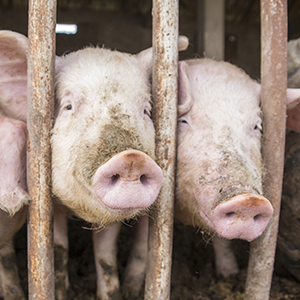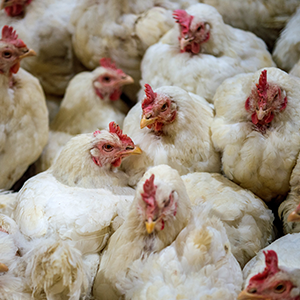2025 U.K. ANIMAL KILL CLOCK
animals have been killed for food
this year in the United Kingdom
animals have been killed for food
this year in the United Kingdom

1,050,000,000

15,400,000

2,780,000

10,990,000

14,000,000

14,556,000
876,000,000

4,394,000,000

Number of animals killed for food in the U.K. since you visited this page.

Number of intensive factory farms in the U.K. (including 789 concentrated animal feeding operations).


Average amount of space afforded to each chicken on intensive U.K. factory farms.

Amount of water used to produce one pound of beef. Equivalent to 7 years of drinking water for the average person.

The following organizations are making a difference through undercover investigations, public education, and legal advocacy. Visit their sites to learn how you can make a difference.
Billions of intelligent animals, capable of feeling fear and pain, suffer in the dark without sympathy or compassion at a scale that is hard to imagine.
What percentage of the U.K. population is vegetarian or vegan?
Approximately 2% of the British population follow a vegan or vegetarian diet. In a 2016 survey of British adults, 1% identified as vegan--an increase of 350% over the prior ten years. Though still low, there is every indication that the upward trend will continue. In recent years, the number of Google searches in the U.K. for ‘vegan’ has grown exponentially.
The NHS now recognise and advise on the health benefits of vegetarian and vegan diets--a shift from dietary advice given to previous generations. Going vegan is also now easier than ever in Britain with a huge increase in the number of independent vegan and vegetarian shops, as well as chain supermarkets and restaurants introducing more plant-based options and improving food labelling.
How does the U.K. rank in farmed animal welfare regulation?
The United Kingdom has a reputation as a strong defender of animal welfare interests. Broad EU and UK legislation address the treatment, transport, and slaughter of farmed animals. A standing committee of animal welfare experts routinely review and propose new regulations. Standardized labeling makes it easy for consumers to select more humanely produced foods.
A large and vocal animal rights community including Animal Aid, Compassion in World Farming, RSPCA, and Veganuary continue to actively campaign for animal rights.
Yet for all the progress, there is still a long way to go. The UK has not been immune to the ever-increasing demand for cheap meat, which leads to producers prioritising efficiency over humanity. There are now 1,674 intensive factory farms in the UK, including 789 megafarms or concentrated animal feeding operations.
How many animals are killed for food in the UK each year?
According to data provided by the Food and Agriculture Organization of the United Nations, 1.1 billion land animals were slaughtered for food in the United Kingdom in 2016.
In addition, roughly 5% of farmed land animals die before slaughter. Inclusive of these deaths, U.K. industrial farming claimed the lives of 1.155 billion land animals in 2016.
Marine animal deaths are challenging to calculate since these lives are measured in tonnes. Exclusive of bycatch and feed fish, the U.K. food supply included 876 million fish and 4.3 billion shellfish (see reference section for details).
Taken together, 6.4 billion land and sea animals are killed annually to support the U.K. food supply.
To put this in perspective, during World War II--the deadliest conflict in human history--more than 60 million people were killed over 6 years. The same number of animals die in support of the U.K. food supply every 3 and a half days.
I like eating meat. Can I still help?
If you're not ready to go vegan, you can still save animals without dramatically changing your diet. Here are a few completely effortless ways that you can make a big difference:
Additional questions and answers
The U.S. version of Animal Clock addresses additional questions, including:
Animal Clock was created to bring attention to the incredible number of animals currently suffering on factory farms.
Animal Clock is currently available in Australia, Canada, the United Kingdom, and the United States.
If you work with an established animal welfare organization and would like to partner with us to launch a clock in your country, please contact us.